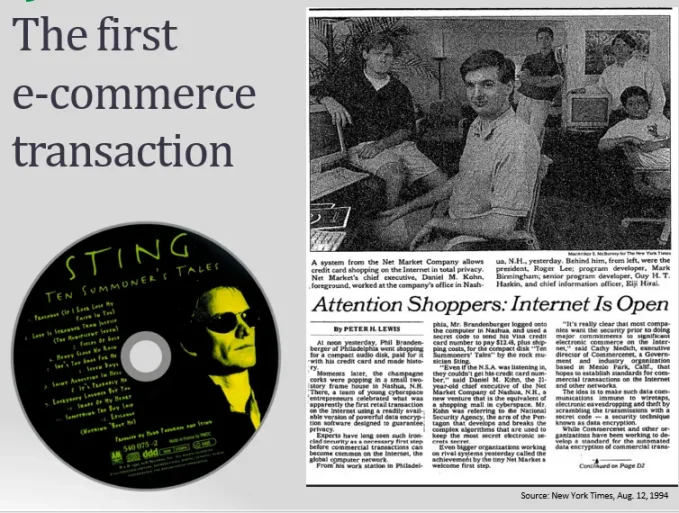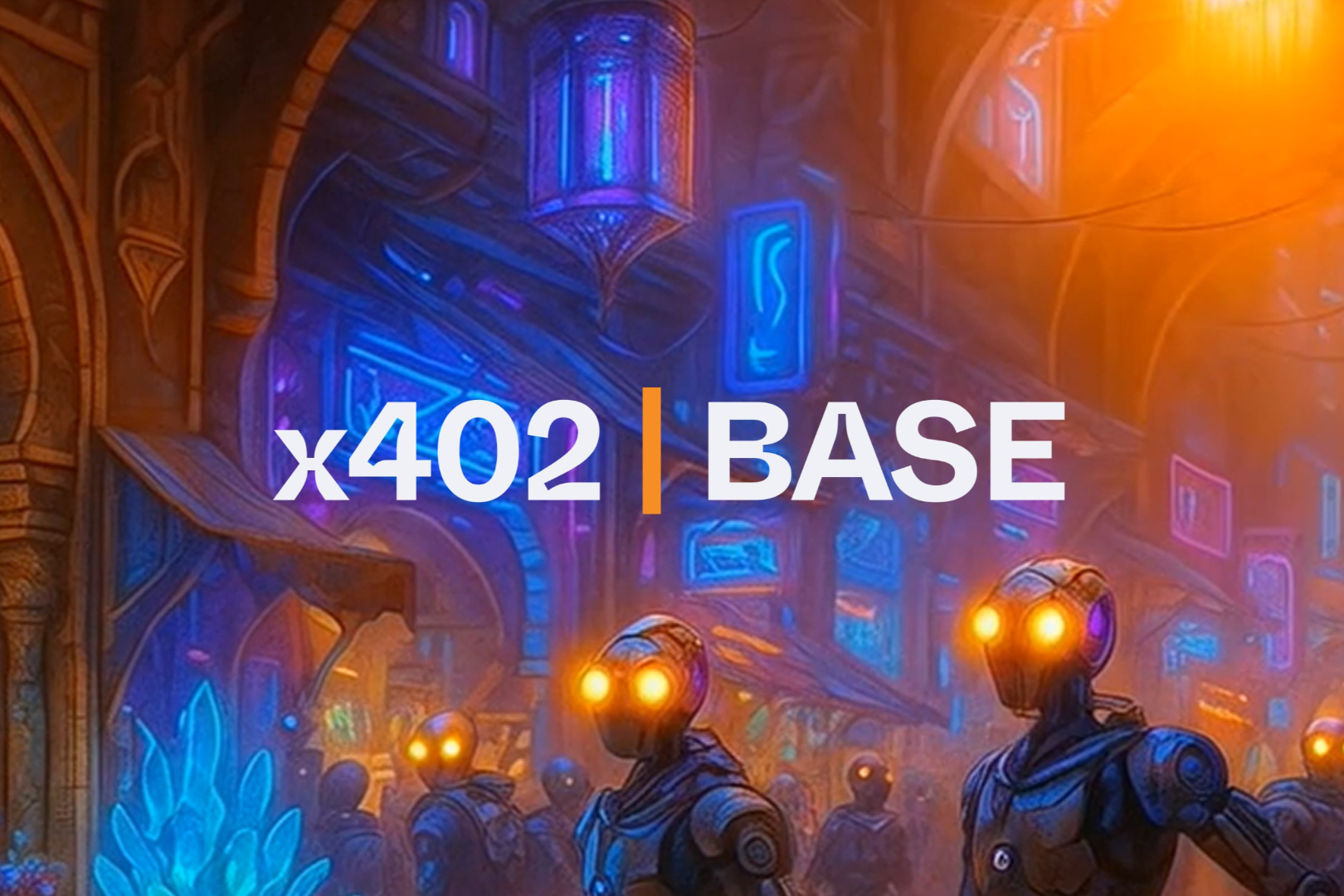Original Author: MARC BAUMANN AND JACY L. YOUN
Original Translation: Luffy, Foresight News
Web3 will disrupt the foundation of the Internet. Last week, I wrote an article about how the new social protocol Farcaster is changing the relationship between social platforms, users, and data. Web3 shifts power back to the users from the platforms, and this shift is also happening in the field of e-commerce.
Brands, please fasten your seat belts to welcome numerous disruptive opportunities.
Empowering Users
In Web3, users own their own data and have control over access to their data, no matter which platform they use.
Essentially, we are moving from closed platforms to open protocols. Farcaster is a social protocol, but this shift will not only affect social platforms but also all platforms on the current internet, including content protocols (Mirror, Paragraph, etc.), identity protocols, and even business protocols.
At an abstract level, the current internet is a collection of platforms that host isolated information.
Web3 returns ownership of this information to the users and allows for interoperable, composable networks and more efficient value exchange.
Economists would say we are transitioning from oligopoly to a free economy.
Marketers would say that we are creating new consumer experiences through ownership incentives and collective participation.
Pragmatists would say that we are giving power back to the people.
One important "protocol" that is being impacted by this change is e-commerce.
Similar to how the internet democratized information access, Web3 is now democratizing e-commerce. We are at the forefront of potential mass adoption.
E-commerce: Then and Now
The first e-commerce transaction took place in 1994. It was the sale of a CD of Sting's "Ten Summoner's Tales", which made history and made headlines.

The coverage of this event by The New York Times was truly incredible. People were concerned about the privacy issues of credit card transactions on the internet. E-commerce seemed like the most unfamiliar thing in the world.
Then, the snowball started rolling:
In 1995, Amazon was launched.
1998, PayPal was launched, becoming the first electronic commerce payment system.
2000, Google launched online advertising.
2004, Shopify was launched. It was the first shopping cart software of its kind, allowing millions of retailers to create their own e-commerce stores.
2011, WooCommerce was launched. As a competitor to Shopify, it introduced the first way to create WordPress e-commerce websites.
2017, Instagram introduced e-commerce products.
2021, Covid-19 drove a 77% increase in e-commerce transactions.
Now, we are at the forefront of the next transformation, and history is repeating itself.
In the 1990s, the lack of tools and infrastructure made it very difficult for early Internet users to start e-commerce stores.
In fact, this challenge turned e-commerce solutions into a trillion-dollar business (Amazon).
While Amazon accounted for 39.5% of U.S. e-commerce retail sales in 2022, even the most basic Internet users can now use tools like WooCommerce, Etsy, or Shopify to create their own e-commerce stores.
Similarly, building web pages in the 1990s required an experienced development team. Today, even my 80-year-old grandmother can create a website in minutes using tools like Squarespace or Wix.
What happened?
Standardization, infrastructure, and tools democratized the internet. Power was returned to the users.
Web3 meets e-commerce
Web3 is expected to play an important role in the future of e-commerce and may completely change the way we buy and sell products and services online.
A few months ago, WooCommerce partnered with Boson Protocol, which is a big deal for e-commerce.
Why? WooCommerce is a free open-source plugin that can turn any WordPress website into a powerful online store, supporting over 3.9 million stores.
This partnership allows brands and sellers to easily sell physical goods associated with NFTs.
Once a physical item is linked to an NFT, it can be freely traded "on-chain," without the need for a centralized platform. As long as someone ensures that the NFT can be redeemed for the physical item at any time, this method is effective.
And that's what Boson Protocol is doing. It allows brands (and essentially anyone) to sell physical items in the form of NFTs online, in virtual worlds, and on NFT marketplaces, while ensuring that users can receive the product or obtain a refund.
Its detailed working principle is as follows:
WooCommerce is a popular online sales tool. Boson Protocol uses blockchain to process transactions. Together, they make it easy for sellers to convert physical goods into NFTs. This means that when you make a purchase, you can receive a digital token that proves its authenticity and shows who owns it.
These tokens then become part of the Web3 economy, constantly flowing until someone decides to use them.
This is great for users. Their "assets" are now online. This means that no matter what platform they are on, they can prove ownership of physical items, use the item as collateral for borrowing, or sell the item without relying on centralized markets. This is a huge opportunity.
For brands and sellers, they can now easily access a completely decentralized e-commerce system with the following features:
Authenticity and traceability: Ensuring the traceability and authenticity of products in the upcoming European Digital Product Passport (DPP).
Limited edition authenticity: Digital twins can transparently limit on-chain collectibles without relying on brand commitments.
After-sales marketing: Owning NFTs and their connected physical products can unlock unique after-sales experiences and generate a wealth of data through brand-direct consumer channels.
This is a new way of marketing and selling products like never before.
E-commerce becomes inherently more transparent, trustless, and open. Especially for small businesses, they don't need to be tech experts or spend a lot of money to start selling products.
It returns power to the users. History repeating itself? Maybe.
How big will this new model scale?
In 2022, global retail e-commerce sales will surpass $50 trillion for the first time, and by 2025, despite slower growth, total spending is projected to exceed $70 trillion.
The compound annual growth rate (CAGR) from 2024 to 2028 is projected to be 9.83%
At least 2.14 billion consumers shop online (28% of the global consumer population), and by 2025, the US alone will have 291 million online buyers.
WooCommerce dominates the market in customizable e-commerce platforms, with a market share of 39% (compared to Squarespace's 15% and Shopify's 10%)

Market share of leading global e-commerce software platforms and technologies as of 2023, source: Statista
Meanwhile, existing e-commerce companies like Visa, Shopify, PayPal, or Venmo have started integrating cryptocurrencies, NFTs, and blockchain into their products.
Now is the time to achieve this goal.
Why now? The new supercycle
What is happening right now?
Web3 infrastructure is maturing
A new group of Web3 native consumers is entering the market
We are at the beginning of another Web3 adoption cycle
Web3 infrastructure is maturing
Since the birth of Bitcoin, we have spent 14 years building "blockchain" infrastructure. In the past three years, we have seen tremendous progress:
Better tools: Brands now have a plethora of solution providers to choose from, covering the entire value chain, from entry wallets (Magic, Dynamic, Privy, Tweed, Web3 Auth, etc.) to integrated user management (e.g., ThirdWeb, Venly, etc.).
Improved user experience: Embedded wallets, MPC (multi-party computation), and account abstraction will greatly simplify the wallet user experience.
Scalability: The number of Ethereum's L2s will increase further. At the same time, highly scalable L1 chains such as Solana, Sui, Aptos, or Near may become Ethereum alternatives for brands to choose from.
Joseph Lubin, co-founder of Ethereum and ConsenSys, outlined the progress of Web3 infrastructure in his keynote speech at Paris Blockchain Week 2023:
"We are no longer in a period similar to the prosperity of the Internet, full of irrational prosperity for many exciting ideas, but without adequate infrastructure. We are in a period similar to the aftermath of the bursting of the dot-com bubble, with severe economic and geopolitical challenges, and little possibility of irrational prosperity. Yes, there will be great innovations in our field, but the difference between now and the previous decade is that while we were building infrastructure back then, we now have sufficient scalability and constantly improving usability to truly attract many people and businesses with real use cases. With many major brands recently adopting our technology, we find ourselves in the era of Web3 commerce."

In fact, Web3 has amazing similarities to the development of Internet infrastructure. Marc Andreessen, co-founder of a16z, said: "
"This isn't the first time I've said that Web3 is like the Internet. If you look back at all my previous statements, I've probably said this about 48 times."
We are still in the early stages.

Technology and the market value of cryptocurrencies, source: Architect Partners.
Emerging Consumer Groups
The next cycle will attract a wave of consumers who are knowledgeable about cryptocurrency, craving a genuine, innovative Web3 experience, offering a wide range of uses for their virtual assets without being limited by brands or platforms.
On the Internet, the time spent in virtual spaces is increasing, especially among Generation Z and millennials:
45% of Generation Z and A Generation are "almost always" online.
In the United States, 38% of Generation Z spend more than 4 hours on social media each day, with a significant amount of time dedicated to content or gaming. As of February 2022, Roblox has nearly 55 million daily users. Minecraft has approximately 140 million monthly active users, and Fortnite has approximately 80 million monthly active users."
70% of Fortnite players say they purchase special clothing and characters that have no in-game use other than looking cool.
In the latest Roblox study, 56% of Gen Z users say that shaping their avatar is more important to them than shaping themselves in the real world. 50% of individuals are "very likely" or "extremely likely" to consider a brand in the real world after trying virtual clothing or products. In 2023, there's been a 38% increase in avatar updates, reaching a total of 165 billion, and people have purchased nearly 1.6 billion digital fashion items and accessories, with a 15% year-over-year increase.
McKinsey estimates that by 2023, the value of the metaverse could reach $50 trillion, with its e-commerce influence alone ranging from $20 trillion to $26 trillion.
Today's consumers, especially the younger generation, are constantly shopping across multiple channels: social media, online platforms, real-life, smartphones, laptops, etc.
The more time people spend online, the more digital value they create and consume, including virtual products.
Of course, these consumers are native to Web3:
We now have hundreds of millions of cryptocurrency owners worldwide.
By 2021, 94% of cryptocurrency buyers were millennials and Gen Z individuals under 40 years old.
93 million US adults own cryptocurrencies.
It's not just about the internet, it's about new wealth:
Gen Z has $360 billion in disposable income, with around 25% of them owning stocks, and 59% believing they can "get rich" through cryptocurrency investments.
Millennials and Gen Z make up 60% of the 52+ million Americans who own cryptocurrencies.
There are 88,200 cryptocurrency millionaires globally.
Now, what's exciting is that we seem to be at the beginning of a bull market, potentially larger than any we've seen before.
Thanks to the recent launch of Bitcoin ETFs, we're seeing record-breaking inflows of funds. Meanwhile, the next Bitcoin halving is approaching, boosting investor sentiment.
For brands, this represents a massive opportunity to get involved, stay relevant, and meet consumer demands.
The next adoption cycle for brands in Web3
Although the bull market from 2021 to 2022 has brought us many trends of brands utilizing NFTs, we have not seen more mature use cases for Web3.
In fact, nearly 50% of the Interbrand Top 100 Brands have entered the Web3 space. We have featured many examples in our case studies (Starbucks, Nike, Lacoste, Gucci, Fiat).
We have identified six major Web3 use cases for brands:
After-sales marketing
Physical experience
Product verification and tracking
Community and co-creation
Monetization of intellectual property
Loyalty

Typically, these use cases overlap and can be categorized into four distinct categories:
Tokenization and digitization
Loyalty and rewards
Community and immersive commerce
Data and insights
By 2024, brands will become smarter and more strategic, seeking different ways to embrace Web3 beyond just NFT drops and marketing gimmicks.
Ultimately (at least in the short term), brands will connect all four of these categories into a single brand strategy deeply embedded in their brand ecosystem.
Web3 commerce will play a crucial role in this and bring benefits to businesses:
More than 85% of US merchants consider enabling cryptocurrency payments a top priority
Merchants accepting cryptocurrency payments see a 327% return on investment and 40% new customer growth
Customers using cryptocurrency spend an average of around $250 per transaction
What's next
In the coming years, we will transition from closed online commerce driven by major e-commerce platforms to an open commerce ecosystem.
This is achieved by integrating major trends, and mature Web3 infrastructure will play a key role in it.
As I pointed out earlier:
Bitcoin has changed the way we store and transact value over the Internet for 14 years. It has laid the foundation for a range of innovations, including Layer 1, NFT, DeFi, smart contracts, and DApps.
For the past 14 years, we have been focused on infrastructure construction. Now, we are ready for consumer applications. For brands, this is an excellent opportunity to capture the spirit of the next generation of consumers. The future is coming faster than you imagine.



